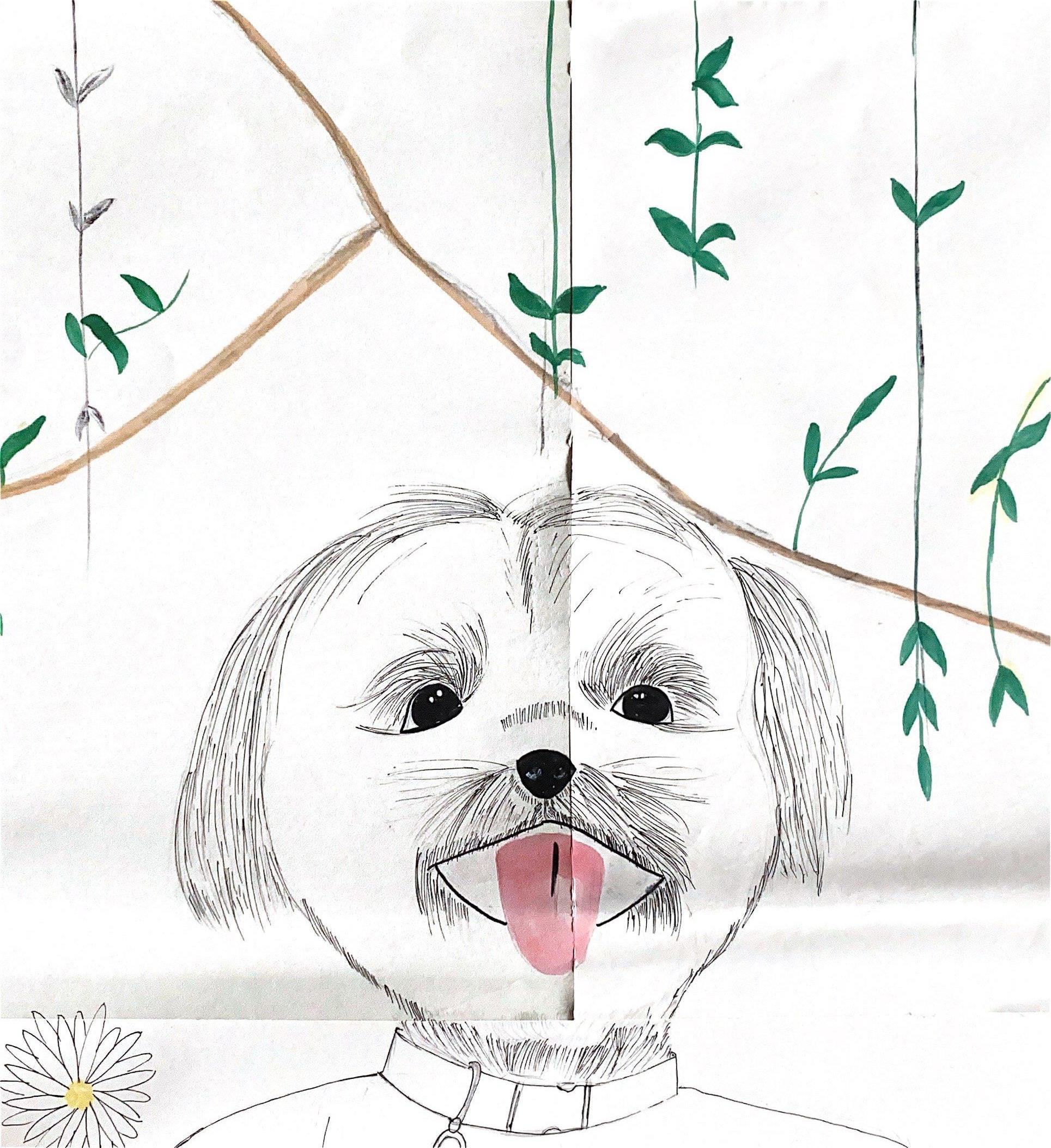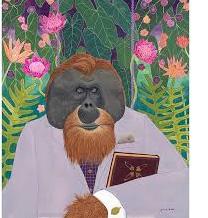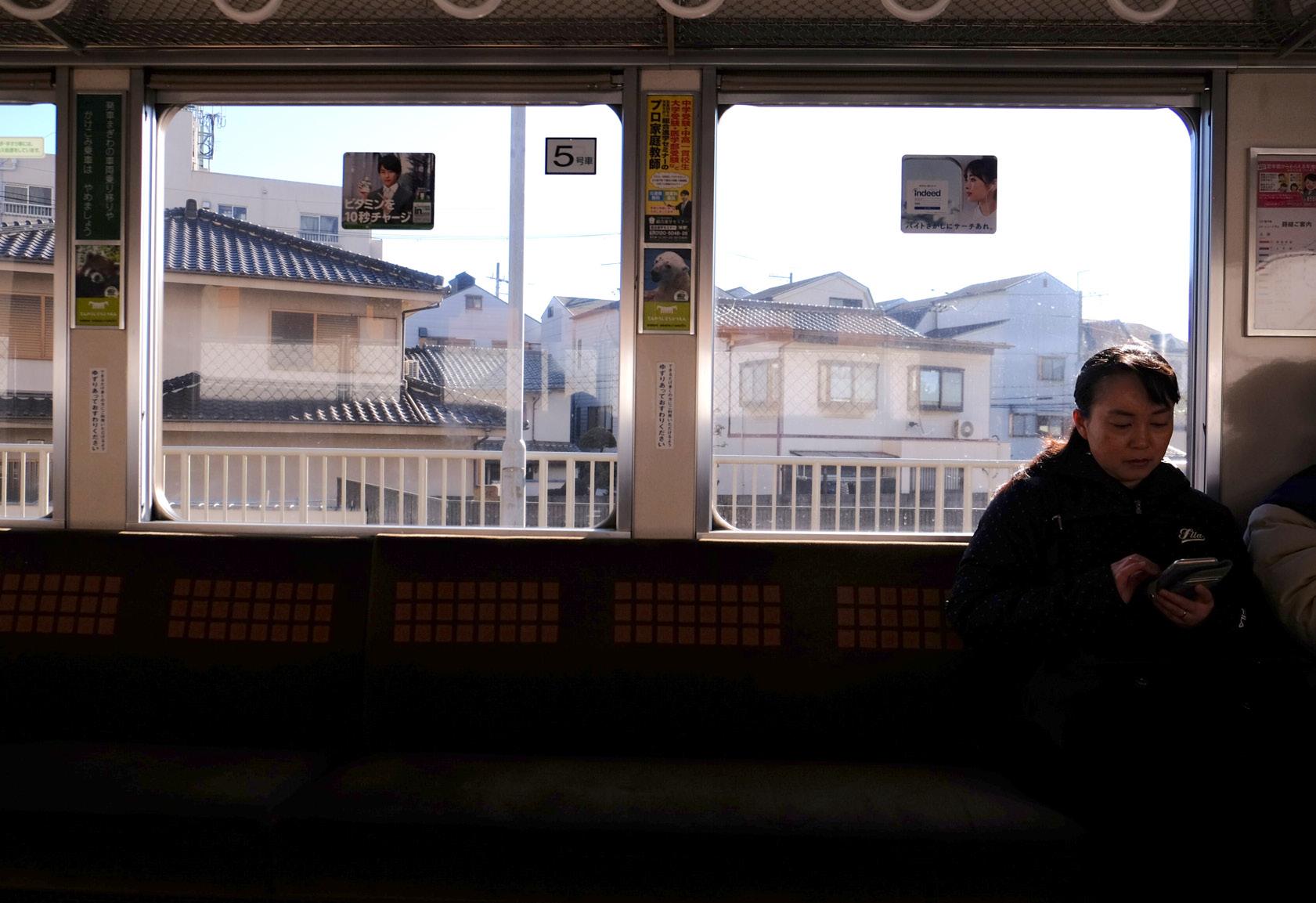
4 minute read
Lying With The Wolf
from Mythmakers SKO
by chantelchua
LYING WITH THE WOLF week 5 20
Daisy
Advertisement
For the lying with the wolf workshop, we had to come up with a drawing that references hair and fur, addressing the themes of identity and the body. I referenced Jamie Luoto’s work which were mostly of an animal’s head on a human body in a portraiture style. There is a sense of surrealism in that, where animals are personified. As such, I got the idea to draw a friend’s puppy on a human body in a garden setting. Since dogs are often termed as being men’s best friends, I often think about the possibility of our pets having their own identities.

Shut Up And Write
Today’s lesson was challenging in terms of absorbing the different articles and films shown. However, it was interesting to revisit childhood stories and analyse them as grown ups. There is in fact a significant change in perspectives as what we once read as mere fictional stories are now compared and taken into the context of reality. It was surprising to see that growing up, we had these inspirational and powerful stories to educate us but we only realise it much later in life, having its morals already ingrained in our memories unconsciously. This walk down memory lane helped to put a little more context to what we are tasked to do for our major project. What really piqued my interest today were the last 2 videos that Georgia showed us of Kiki Smith’s exhibition that had so much to do with nature, the female body and the realism of her work. The video of the artist who lived in Bali was rather insightful as well - sometimes we get so caught up in the digital world, we forget the importance of using our hands to create and using the space around us to inform our practice.

“The eyes are the mirror of the soul and reflect everything that seems to behidden; and like a mirror they also reflect the person looking into them.” -Paulo Coelho
GLASS & MIRRORS week 6
In this workshop, we had to rcome up with drawings in response to objects and their reflections, exploring the thematic and metaphorical dimensions of mirrored surfaces and objects. For this particular drawing, I used a 6B pencil as I didnt have charcoal at home. For my props, I placed a small pot of fake plant on a mirror, creating a dual reflection of the plant in the mirror. It was challenging to say the least but also interesting to see how two different angles of the same object in the same composition/ drawing. In a sense, this composition gives a sense of assymetry that divides the imagery created across the contact point between the object and mirror.

Infinity Mirrored Room—The Souls of Millions of Light Years Away by Yayoi Kusama
Artist Work
One such example of an Artist using mirrors in their work is japanese artist, Yayoi Kusama. Her 2013 work titled “Infinity Mirrored Rooms - The Souls of Millions of Light Years Away” is an immersive environment that fosters an out-of-body experience,heightens one’s senses, and produces a repetitive illusion through the use of lights and mirrors in a dimly lit mirrored room. Continuing her exploration of the transience of life and the inevitability of death, this installation creates a harmonious and quiet place for visitors to contemplate their existence, reflect on the passage of time, and think about their relationship to the outer world.
Commute

Naturalism Expressiveness
INK WASH week 7
Ink wash is a technique that falls somewhere between drawing and painting. Because the medium is wet when it is applied, many consider ink wash a painting technique. There a variety of colored inks that can be used to create ink washes but ink wash is Eastern in origin and is almost always completed in black ink.
The ink wash technique is quite similar to watercolor painting techniques as like with watercolor, lighter values of colors are created by thinning the ink with water. The more water present in the mixture, the lighter the value. Ink wash is also best applied in layers, from light values to dark values allowing time for the layers to dry before new layers are applied. much like in watercolor painting. One major difference between ink wash and watercolor painting is that ink wash is a bit unforgiving. Mistakes made with ink wash are difficult to fix hence, its better to make sure that you have the right value of ink before applying it to the surface.

Reflection
For this workshop, Alex wanted us to use ink to create ink wash paintings. That meant we could only use a single coloured ink and manipulate the shades depending on the water to ink ratio. Inspired by the paintings Alex did during his travels, I decided that I would refer to a photograph I took while I was on a train in Japan. People-watching is one of my favourite things to do while commuting on public transport, I chose this particular photograph as I really like how the clear windows sort of bring the outside landscape into the train cabin, creating a seemingly emotional narrative of the lady in the picture. The ink I worked with was chinese calligraphy ink and the whole process of achieving the light and dark tones was a lot more challenging than what I initially thought as I struggled with making a clear distinction between the highlights and shadows




